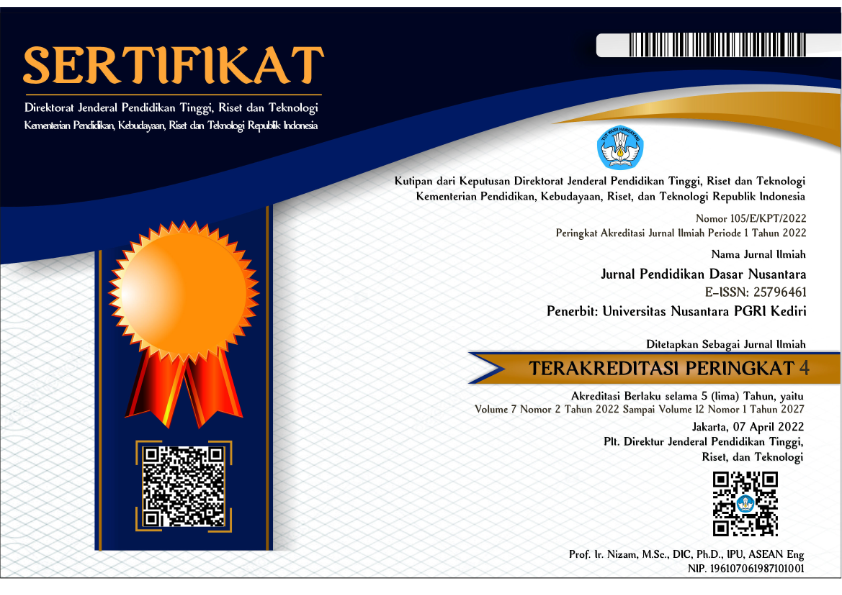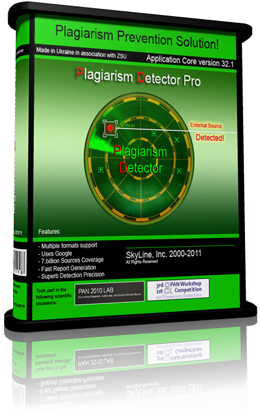Pengembangan Media Tata Surya Berbasis Macromedia Flash Sebagai Inovasi Pembelajaran DARING Untuk Siswa SD
DOI:
https://doi.org/10.29407/jpdn.v6i1.14711Keywords:
Solar system media, macromedia flash, online learningAbstract
Abstract: Based on the existing problems, during the Covid-19 pandemic, students were required to learn from home by learning online (DARING). Thus the researcher aims to develop innovative and valid learning media for students. The method used in this study is to use the R&D method with the ADDIE model (Analysis, Design, Development, Implementation and Evaluation). The results showed that the solar system media was suitable for use by elementary school students as evidenced by the results of the validity of the media expert with a validity value of 90% with the feasible category. The validity of media eligibility is based on the suitability of images, colors, fonts, text layout, images, animation and sound. While the validity of material experts reached 83% based on core competence (KI), indicators, suitability with children's cognitive development. Meanwhile, 87% of linguists were categorized as feasible based on the level of language development of students. Thus the solar system media products are valid and suitable for use in learning in elementary schools.
Downloads
References
Aka, K. A. (2017). Pemanfaatan Teknologi Informasi Dan Komunikasi (TIK) Sebagai Wujud Inovasi Sumber Belajar Di Sekolah Dasar. ELSE (Elementary School Education Journal): Jurnal Pendidikan Dan Pembelajaran Sekolah Dasar, 1(2a).
Milman, N. B. (2015). Distance Education. In International Encyclopedia of the Social & Behavioral Sciences: Second Edition. https://doi.org/10.1016/B978-0-08097086-8.92001-4
Mukmin, B. A., & Primasatya, N. (2020). Pengembangan Multimedia Interaktif Macromedia Flash Berbasis K-13 Sebagai Inovasi Pembelajaran Tematik Untuk Siswa Sekolah Dasar. JURNAL PENDIDIKAN DASAR NUSANTARA, 5(2), 211-226.
Mukmin, B. A., & Zunaidah, F. N. (2018). Pengembangan Bahan Ajar DELIKAN Tematik Berbasis Multimedia Interaktif Untuk Siswa Sekolah Dasar di Kota Kediri. Al Ibtida: Jurnal Pendidikan Guru MI, 5(2), 145-158.
Muhson, A. (2010). Pengembangan media pembelajaran berbasis teknologi informasi. Jurnal Pendidikan Akuntansi Indonesia, 8(2).
Maskur, R., Nofrizal, N., & Syazali, M. (2017). Pengembangan Media Pembelajaran Matematika dengan Macromedia Flash. Al-Jabar: Jurnal Pendidikan Matematika, 8(2), 177-186.
Munadi, Y. (2013). Media Pembelajaran (Sebuah Pendekatan Baru), Referensi. Jakarta: (GP Press Group)
Nopriyanti, N., & Sudira, P. (2015). Pengembangan multimedia pembelajaran interaktif kompetensi dasar pemasangan sistem penerangan dan wiring kelistrikan di SMK. Jurnal Pendidikan Vokasi, 5(2), 222-235.
Sumarsih, d. M. (2016). Pengembangan Multimedia Akuntasi Biaya Metode Harga Popok Pesanan Bagi Mahasiswa Jurusan Pendidikan Akuntasi UNY. Jurnal Inovasi Teknologi Pendidikan, 3 (1), 92-105.
Wicaksono, S. (2016). The Development of Interactive Multimedia Based Learning Using Macromedia Flash 8 In Accounring Course. Journal of Accounting and Business Education 1 (1), 122-139.
Downloads
Published
Issue
Section
License
Authors who publish with this journal agree to the following terms:
- Copyright on any article is retained by the author(s).
- The author grants the journal, the right of first publication with the work simultaneously licensed under a Creative Commons Attribution License that allows others to share the work with an acknowledgment of the work’s authorship and initial publication in this journal.
- Authors are able to enter into separate, additional contractual arrangements for the non-exclusive distribution of the journal’s published version of the work (e.g., post it to an institutional repository or publish it in a book), with an acknowledgment of its initial publication in this journal.
- Authors are permitted and encouraged to post their work online (e.g., in institutional repositories or on their website) prior to and during the submission process, as it can lead to productive exchanges, as well as earlier and greater citation of published work.
- The article and any associated published material is distributed under the Creative Commons Attribution-ShareAlike 4.0 International License
































